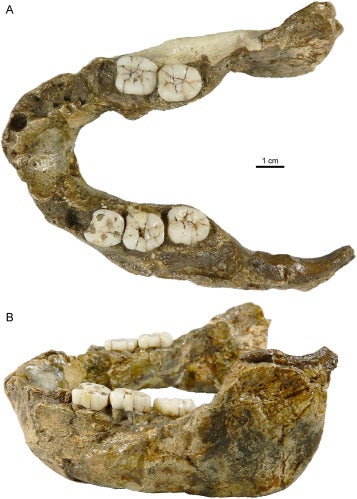A 1.4-million-year-old fossil jaw discovered in a South African cave in 1949 has now been identified as that of a previously unknown human relative species dubbed the “nutcracker man”.
Researchers have believed since the 1960s that the fossil jaw, unearthed at the Swartkrans archaeological site, belonged to an early human species called Homo ergaster.
But new X-ray scans of the jaw and other fossils found at the site have helped create virtual 3D models that offer a better understanding of the internal and external structures of the extinct species.
The new findings, detailed in a study published in the Journal of Human Evolution, have led researchers to conclude that the jaw doesn’t in fact belong to H ergaster.
It comes from a new species of the genus Paranthropus, nicknamed the “nutcracker man” due to the fossil’s massive size and huge molar teeth.

The researchers specifically assessed the fossil’s dentine – the hard, dense, bony tissue that forms the bulk of a tooth below the enamel – and then compared it with those of other human relatives.
They found the fossil’s teeth features differed from previously discovered specimens of the genus known as P aethiopicus, P boisei and P robustus.
“Altogether, the results show that SK 15 unambiguously falls outside the variation of H ergaster and that it’s most compatible with the morphology of Paranthropus,” the researchers wrote in the study.
They categorised the fossil as belonging to a newfound species, which they named P capensis.
“We tentatively attribute SK 15 to Paranthropus capensis, a more gracile species of Paranthropus than the other three currently recognized species of this genus,” they said.
The newly discovered species “very likely” split from P robustus over 2 million years ago.
This means at least two Paranthropus species – P robustus and P capensis – may have coexisted in the South African region 1.4 million years ago, likely inhabiting different ecological niches with varying diets.
The researchers called for further testing of preserved specimens of the genus Paranthropus to look for P capensis fossils mixed with them. “The presence of other P. capensis specimens mixed among the current hypodigm of P robustus should be tested further, in particular by revising the fossil assemblages from Swartkrans,” they said.











